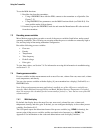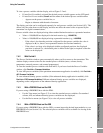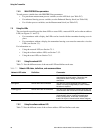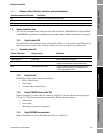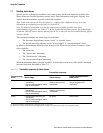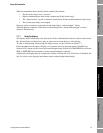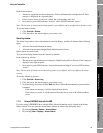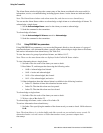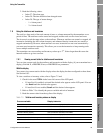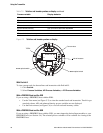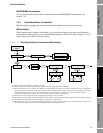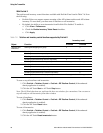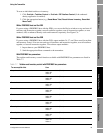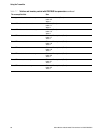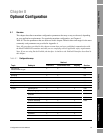44 Micro Motion
®
Model 2400S Transmitters for PROFIBUS-DP
Using the Transmitter
The Alarm Status window displays the current status of the alarms considered to be most useful for
information, service, or troubleshooting, including Ignore alarms. Active alarms are indicated with a
check.
Note: The Alarm Status window reads alarm status bits, and does not access alarm history.
You can use the Alarm Status window to acknowledge a single alarm or to acknowledge all alarms. To
acknowledge a single alarm:
1. Set the
Acknowledge Alarm control to the alarm you want to acknowledge.
2. Send the command to the transmitter.
To acknowledge all alarms:
1. Set the
Acknowledge All Alarms control to Acknowledge.
2. Send the command to the transmitter.
7.7.4 Using PROFIBUS bus parameters
Using PROFIBUS bus parameters, you can use the Diagnostic block to view the status of a group of
preselected alarms, view information about a specific alarm, acknowledge a single alarm or all alarms,
and retrieve information from alarm history. See Table D-4.
To view the status of a group of preselected alarms, use Indices 10–17.
Note: These are the same alarms that are displayed in the ProLink II Status window.
To view information about a single alarm:
1. Set Index 20 to the code of the alarm you want to check.
2. Read Index 22, and interpret the data using the following codes:
• 0x00 = Acknowledged and cleared
• 0x01 = Active and acknowledged
• 0x10 = Not acknowledged, but cleared
• 0x11 = Not acknowledged, and active
3. Other information about the indexed alarm is available in the following locations:
• Index 23: Number of times this alarm has become active
• Index 24: The time this alarm was last posted
• Index 25: The time this alarm was last cleared
To acknowledge a single alarm:
1. Set Index 20 to the code of the alarm you want to check.
2. Write a value of
0 to Index 22.
To acknowledge all alarms, write a value of
1 to Index 30.
To retrieve information from alarm history:
1. Set Index 26 to specifying the number of the alarm record you want to check. Valid values are
0–49.
Note: The alarm history is a circular buffer, and older records are overwritten by newer records. To
determine whether a record is newer or older than another record, you must compare their
timestamps.



